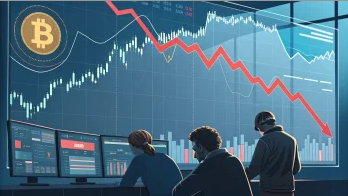Investing in the stock market can often feel like a high-stakes gamble, particularly for those new to the finance world. The fear of losing money, amplified by the constant stream of news about wars, political instability, inflation, and national debt, can make the prospect of investing seem incredibly risky. However, it’s crucial to understand that fear and risk are not always synonymous when it comes to the stock market.
View this post on Instagram
A post shared by Taylor Sohns – CFP®, CIMA®, MBA – Finance (@lifegoalinvestments)
Table of Contents
ToggleDecoding the VIX Index
One of the most effective ways to gauge the level of fear in the stock market is by looking at the Volatility Index, or the VIX Index. This real-time market index represents the market’s expectation of 30-day forward-looking volatility. It’s derived from the price inputs of the S&P 500 index options, measuring market risk and investors’ sentiments.
Interestingly, despite the numerous factors that might cause concern among potential investors, the VIX Index shows that the market is not as fearful as one might think. Since 1990, there have only been three instances where the level of fear in the market was lower than today. This statistic is surprising, considering the various global events and economic factors that could potentially impact the market.
Interpreting the VIX Index: two perspectives
There are two ways to interpret the VIX Index. The first is the fearful perspective, which views the low level of fear as a beach ball being held beneath the water, ready to erupt higher at any moment. This perspective suggests that the current calm is merely the calm before the storm and that a significant market downturn is imminent.
The second perspective is more optimistic. It suggests that when the VIX Index, or the ‘fear index,’ is low, there is a lot of money to be made in the market. This perspective is supported by historical trends. For instance, during the 1990s, mid-2000s, 2010s, and the last 18 months, the VIX Index was relatively low, and these periods were characterized by significant market growth.
The cost of playing it safe
While it may feel safe to sit on the sidelines and avoid investing due to fear, this approach can result in missed opportunities. For example, over the past 18 months, stocks have risen by 48%. Those who chose to sit out due to fear now look in the rearview mirror at significant potential gains they missed out on.
The pitfall of market timing
Many investors fall into the trap of believing they can time the market and predict when to buy low and sell high. However, this is a dangerous misconception. The market is unpredictable, and trying to time it can result in significant losses. Instead of trying to outsmart the market, it’s better to adopt and stick to a long-term investment strategy.
The power of diversification
While it’s true that stocks will come down at some point, this is not a reason to avoid investing altogether. Instead, it underscores the importance of diversification. By diversifying your portfolio with bonds and alternative investments, you can mitigate the risk associated with market volatility. Diversification can provide a safety net, ensuring that even if one investment performs poorly, others may perform well, balancing out your overall returns.
Conclusion: fear not, invest wisely
Investing in the stock market can be intimidating, but understanding the market’s fear level, as measured by the VIX Index, can provide valuable insights. Despite the various factors that might cause concern, the market is currently less fearful than it has been at almost any point since 1990. While it’s essential to be aware of the risks associated with investing, it’s equally important not to let fear prevent you from taking advantage of potential opportunities. Diversification and a long-term investment strategy can help mitigate these risks and set you on the path to financial success.
Frequently Asked Questions
Q. What is the VIX Index?
The VIX Index, also known as the Volatility Index, is a real-time market index that represents the market’s expectation of 30-day forward-looking volatility. It’s derived from the price inputs of the S&P 500 index options, measuring market risk and investors’ sentiments.
Q. How can the VIX Index be interpreted?
There are two ways to interpret the VIX Index. One is the fearful perspective, which views low fear as a sign of an imminent market downturn. The other is the optimistic perspective, which suggests that when the VIX Index is low, there is a lot of money to be made in the market.
Q. What is the cost of not investing due to fear?
Not investing due to fear can result in missed opportunities. For example, over the past 18 months, stocks have risen by 48%. Those who chose not to invest due to fear missed out on these potential gains.
Q. What is the pitfall of trying to time the market?
Many investors believe they can predict when to buy low and sell high. However, the market is unpredictable, and trying to time it can result in significant losses. Instead of trying to outsmart the market, it’s better to adopt and stick to a long-term investment strategy.
Q. What is the importance of diversification in investing?
Diversification is important as it can mitigate the risk associated with market volatility. By diversifying your portfolio with bonds and alternative investments, you can ensure that even if one investment performs poorly, others may perform well, balancing out your overall returns.
Q. How can understanding the VIX Index help in investing?
Understanding the market’s fear level, as measured by the VIX Index, can provide valuable insights. Despite various factors that might cause concern, the market is less fearful than it has been at almost any point since 1990. This understanding can help in making informed investment decisions.

















